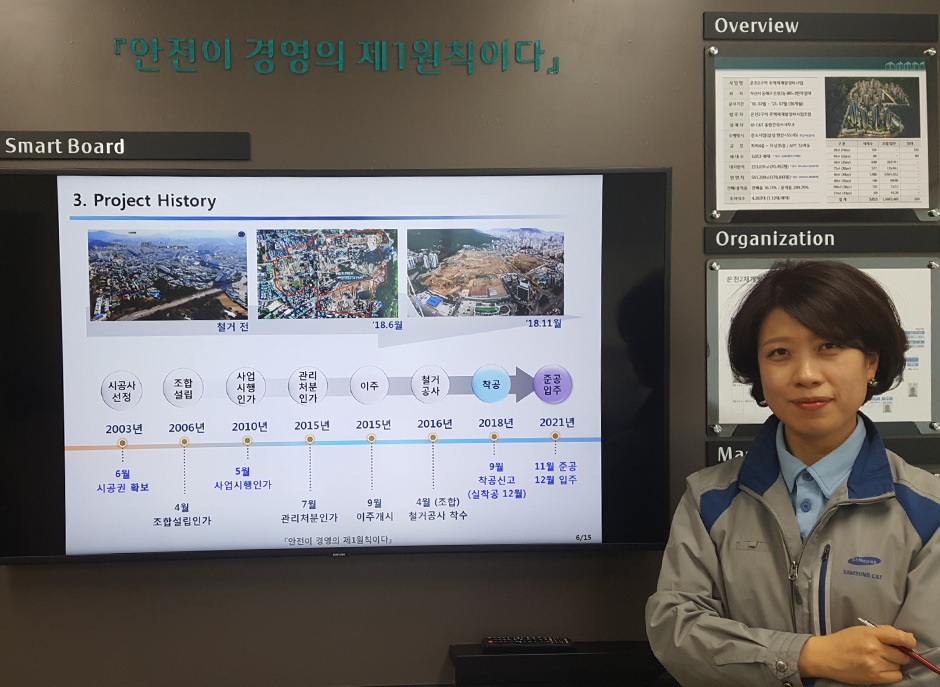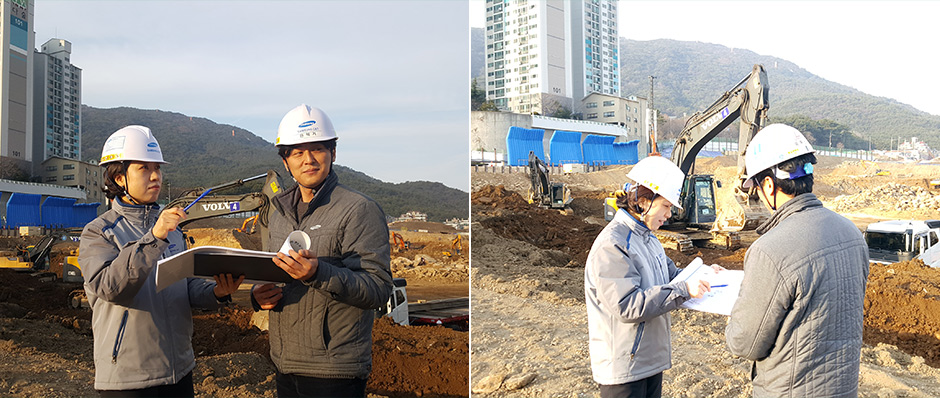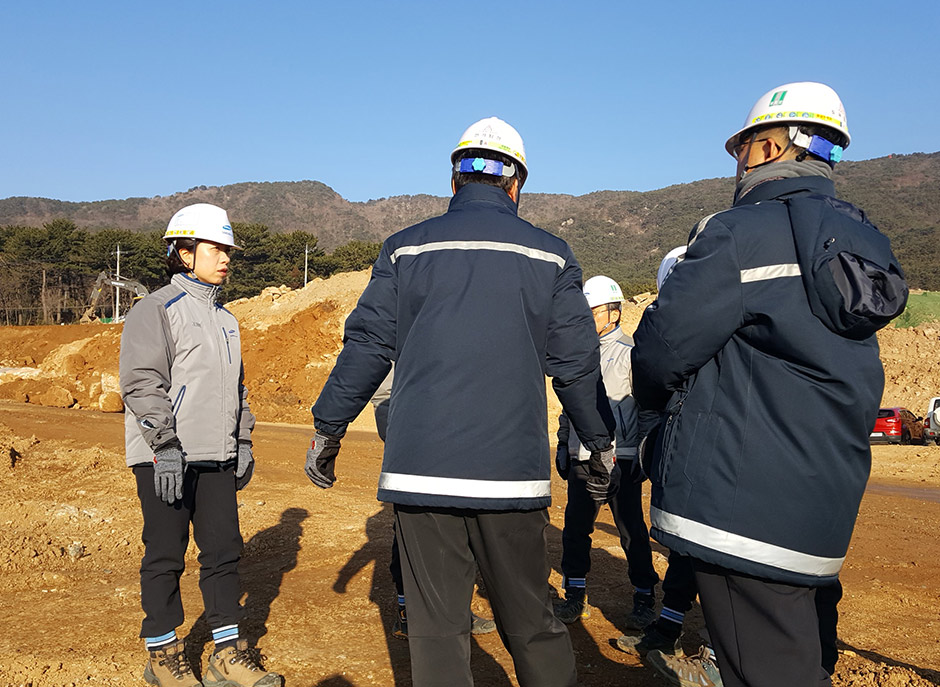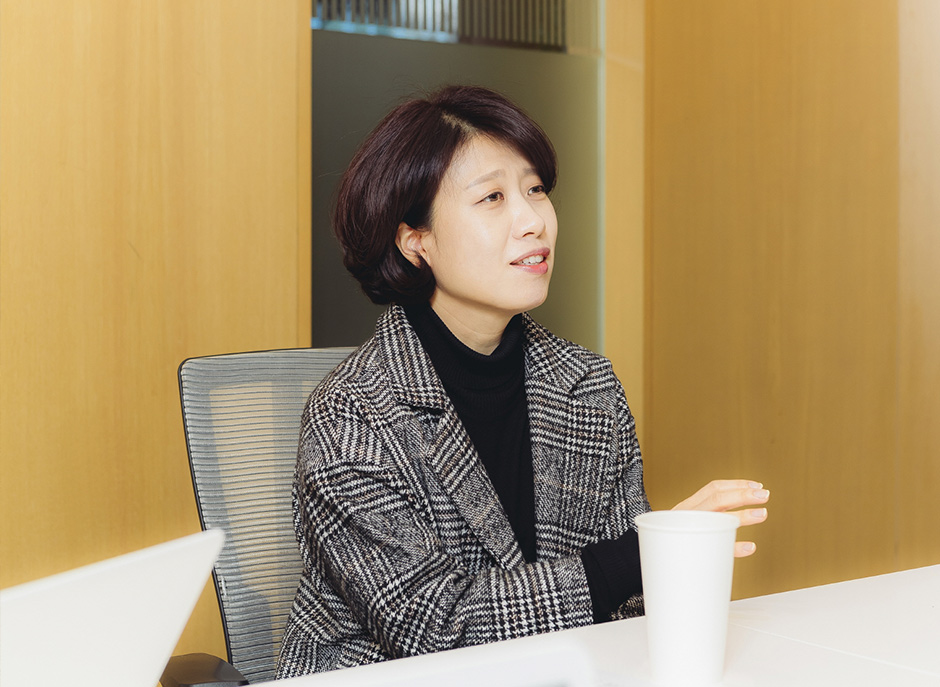With heavy machinery, workers, and materials constantly in motion, construction sites may seem chaotic at first glance. But a closer look will reveal subtle patterns amidst the cacophony. Like individual musicians in an orchestra, workers and machines each play a specific role and collaborate in harmony towards a common goal.
But how is coordination possible when there are so many different moving parts? Samsung C&T newsroom sat down with site manager In-sook Park from the Construction Group to learn more about how construction projects come together.
The On-site Conductor
No matter the scale of the project, construction sites need the help of site managers to function. From supervising workers, transporting materials, to liaising with clients, almost every aspect of a project goes through the site manager. In the U.S., employment of construction managers is expected to grow 11% from 2016 to 2026, reflecting the job’s importance in our world today.
While the role seems diverse, site managers are mainly guided by three goals – completing the project smoothly, managing budget, and maintaining quality. But the process often throws up unique problems.
“Working in the field can be very different from one day to another,” says Park.
She further adds that site managers may need to get more hands-on when working on small-scale projects, while large-scale sites tend to require more focus on problem-solving.
“Each project has its challenges, which keeps the job fun and rewarding,” she says.
Becoming an Expert Builder
Site managers come across a wide range of issues that require in-depth technical knowledge in diverse fields, including engineering, logistics, and management. In addition to technical know-how, the role also calls for other less tangible soft skills, particularly when it comes to engaging with different stakeholders.
“Listening carefully to other people’s ideas and concerns is key to running a construction project successfully. When you see the situation from the other person’s point of view, you can formulate better strategies and plans,” Park says.
This willingness to understand issues from different perspectives has helped Park balance conflicting interests during construction projects. Local residents, for example, may complain about noise from the site. Instead of dismissing their concerns in favor of efficiency and cost, Park says working with different parties to find an agreeable solution, such as adjusting the work schedule or installing sound insulation, will benefit the project in the long-term.
“Knowing what to do comes with experience, and it’s important to learn as much as possible from different situations,” she says. “Even experiences that I thought were negative at the time turned out to be valuable opportunities or important lessons.”
Overcoming Challenges and Nurturing Talent
With a diverse portfolio of projects, Park says Samsung C&T has given her many unique opportunities to work in different environments since joining in 1998.
“The company trusted me from day one and allowed me to try many different tasks,” she says. “This gave me the necessary experience to grow as a professional.”
As construction is still a male-dominated industry in Korea as well as globally, it hasn’t always been easy for Park to work in the field. Recalling the time when she first entered the industry, the veteran site manager says construction sites and offices lacked facilities that serve the needs of female employees. But thanks to the Construction Group’s flexible approach to working mothers, as well as various programs that empower women in the company, Park was able to advance through the ranks and develop her skills in the industry. With the number of women working in construction slowly increasing worldwide, Park’s career trajectory also reflects the shift towards diversity in the industry.1
Looking ahead to future goals, Park wants to use her personal journey and experiences to inspire the next generation of construction professionals.
“I always encourage young people who have just entered the industry to work on all types of projects to gain experience,” Park says. “Working in construction can be tough, and it requires perseverance and courage to succeed.”
1In the U.S., for example, the number of women working in construction grew by around 132,000 from 2010 to 2016.










